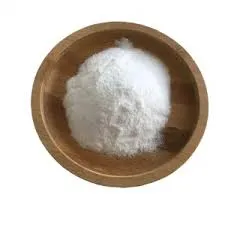Development, Manufacturing, and Regulation of Active Pharmaceutical Ingredients
The realm of pharmaceuticals is fundamentally anchored in active pharmaceutical ingredients (APIs), the essential components responsible for the intended therapeutic effects of medications. From the early stages of drug discovery to the final stages of manufacturing and regulation, the development of APIs is a complex process that demands meticulous attention to detail, adherence to stringent quality standards, and compliance with regulatory frameworks.
The development of APIs typically begins with extensive research and testing to identify potential compounds that exhibit desired biological activity. This stage involves a myriad of scientific disciplines, including medicinal chemistry, pharmacology, and toxicology. Once promising candidates are identified, they undergo a series of pre-clinical and clinical trials to assess their safety and efficacy. This phase is critical, as it determines whether the compound can advance to commercialization as a viable therapeutic option.
Once the development phase is completed successfully, attention shifts to the manufacturing of APIs. This process involves scaling up production from laboratory settings to industrial-scale operations while maintaining rigorous quality control measures. Manufacturers must adhere to Good Manufacturing Practices (GMP), which outline the standards for production, quality assurance, and documentation. Contamination, variations in potency, and inconsistencies in the manufacturing process can have significant repercussions, not just for the manufacturer, but also for patient safety and public health.
active pharmaceutical ingredients development manufacturing and regulation

Regulation plays a pivotal role in the lifecycle of APIs. Regulatory bodies, such as the U.S. Food and Drug Administration (FDA) and the European Medicines Agency (EMA), set stringent guidelines to ensure that APIs are safe and effective. These agencies review data from clinical trials, manufacturing processes, and quality control measures before granting approval for market entry. Post-marketing surveillance is also essential, as it helps monitor the long-term safety and efficacy of APIs once they are in use.
The globalization of the pharmaceutical industry has introduced additional complexities to API development and regulation. Inspections and compliance monitoring have become increasingly collaborative, with international standards aimed at ensuring high levels of safety across borders. The importance of transparency and traceability has grown, demanding that manufacturers provide in-depth documentation of their processes and supply chains to reassure regulatory bodies and stakeholders about the quality and safety of their products.
In conclusion, the development, manufacturing, and regulation of active pharmaceutical ingredients are intertwined processes that shape the effectiveness and safety of pharmaceutical therapies. As the landscape of global health continues to evolve, maintaining rigorous standards in these areas will be paramount to delivering innovative and safe treatments to patients worldwide.

